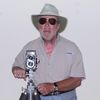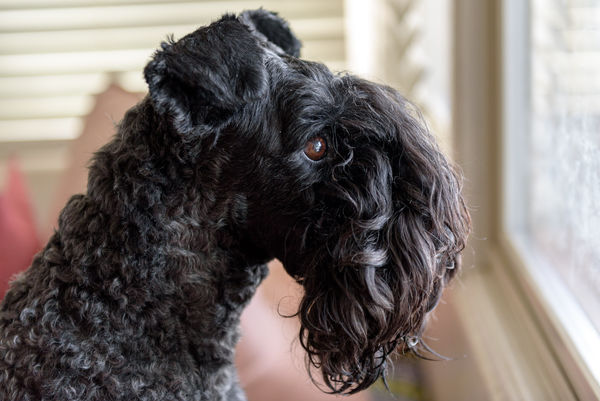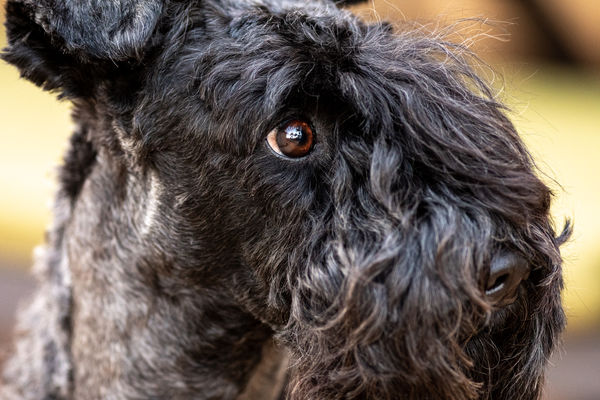Photographing very dark animal.
Apr 29, 2020 09:48:10 #
rmg49 wrote:
I have a very dark dog. I am looking for suggestions for the best way to photograph him without using a flash. His coat is very black and it is hard to get any definition of his features. Any suggestions are appreciated.
My experience - based on dark cats - is that lots of light is needed to get a good rendition of a dark animal. Based on that, your choices are flash or outside. If you want to photograph inside without flash, your only choice may be over-exposure and hope for the best.
Apr 29, 2020 10:19:39 #
Guyserman
Loc: Benton, AR
billroach2717 wrote:
Is this right?
...
It seems to me someone was saying the opposite.
...
It seems to me someone was saying the opposite.
The difference is incident light metering vs reflected light metering.
Apr 29, 2020 11:48:49 #
rmg49 wrote:
I have a very dark dog. I am looking for suggestions for the best way to photograph him without using a flash. His coat is very black and it is hard to get any definition of his features. Any suggestions are appreciated.
There are two elements to the original request: the colour density and seeing the texture of the fur
with a very dark or black subject, reflective metering increases exposure so subject become 'grey' - decrease exposure
The darker the subject the greater the exposure decrease needed - a black subject can require up to 3 stops of exposure increase but 1 or 2 stops is more likely.
The problem is that the resulting correctly exposed black dog loses all fur texture. The suggestion to spritz the fur with a very fine water spray is excellent, particularly in good light. The tips and other parts of fur will show as highlights - texture returned!
picture of Winston after swim in Loch Ness, Scotland
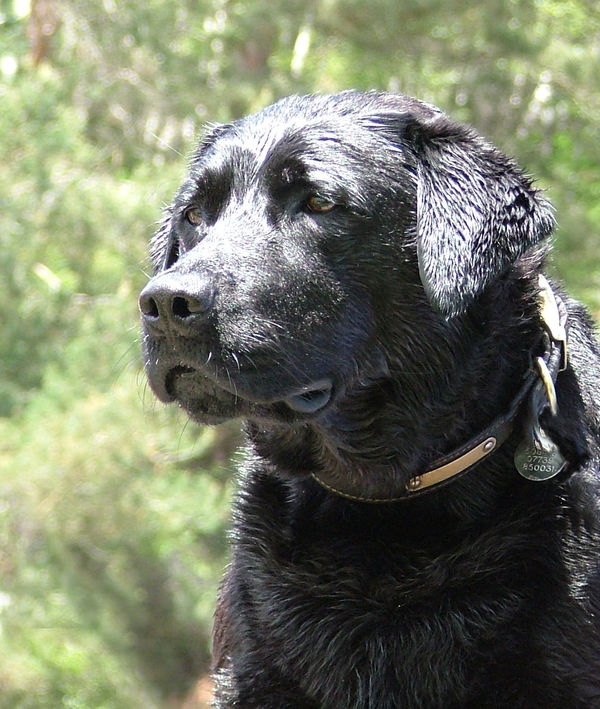
Apr 29, 2020 11:58:30 #
Apr 29, 2020 12:42:42 #
DennisC.
Loc: Antelope, CA
rmg49 wrote:
I have a very dark dog. I am looking for suggestions for the best way to photograph him without using a flash. His coat is very black and it is hard to get any definition of his features. Any suggestions are appreciated.
Softer light will always be your best friend especially when photographing dark animals.
Apr 29, 2020 13:18:59 #
Yes, the exposure compensation adjustment in other posts should work especially with close up face shots. For whole body photos where there may be more background use spot metering on the dog instead of whole scene metering, then see if it requires any exposure compensation. We have an all black grand dog and these techniques seem to work well on him.
Apr 29, 2020 13:46:41 #
sandiegosteve
Loc: San Diego, CA
Lots of good suggestions in here. If your dog can sit still, you can have some fun learning. Mine... doesn't.
For detail in a dark subject, you need more light. That is the short answer.
Here are two images I have handy. One, I used the light of the window, the other is outside.
The window is with my iPhone where I touch his head and it tells the phone to spot meter there. The rest is a bit over exposed, but you can see his face. The phone lets you see the results first. Point is, I decided what I wanted to be exposed right. If I touched the white background, he would be a silhouette.
The other was in the shade metered for his head. I was testing a lens and managed to get him. I spot metered off his face which adds some highlights to his beard. The shade helped a lot to keep the background from going too crazy. I don't know what mode I was shooting in since I was check AF of a new lens. I either was in M with a spot focus on face, or auto ISO and I ticked up the exposure compensation to make his face visible. The background was blown out, but I'm ok with it in this image.
I approach most high-contrast situations the same. You need to realize that you can't easily get both the highlights and the shadows, so you need to decide if you want the shadows or the highlights to be the focus. For my dog, I want the shadows because he is dark. Same with an backlit subject. You can spot meter to see what the area you want in focus, or do overall exposure compensation. Over time, you will know to see your meter reading higher than "zero". For a bright landscape with cool clouds, I want the clouds so I might have the meter go the other way.
You do say "no flash", but off camera flash does wonders with dark subjects too. Particularly ones that sit still.
Happy shooting.
For detail in a dark subject, you need more light. That is the short answer.
Here are two images I have handy. One, I used the light of the window, the other is outside.
The window is with my iPhone where I touch his head and it tells the phone to spot meter there. The rest is a bit over exposed, but you can see his face. The phone lets you see the results first. Point is, I decided what I wanted to be exposed right. If I touched the white background, he would be a silhouette.
The other was in the shade metered for his head. I was testing a lens and managed to get him. I spot metered off his face which adds some highlights to his beard. The shade helped a lot to keep the background from going too crazy. I don't know what mode I was shooting in since I was check AF of a new lens. I either was in M with a spot focus on face, or auto ISO and I ticked up the exposure compensation to make his face visible. The background was blown out, but I'm ok with it in this image.
I approach most high-contrast situations the same. You need to realize that you can't easily get both the highlights and the shadows, so you need to decide if you want the shadows or the highlights to be the focus. For my dog, I want the shadows because he is dark. Same with an backlit subject. You can spot meter to see what the area you want in focus, or do overall exposure compensation. Over time, you will know to see your meter reading higher than "zero". For a bright landscape with cool clouds, I want the clouds so I might have the meter go the other way.
You do say "no flash", but off camera flash does wonders with dark subjects too. Particularly ones that sit still.
Happy shooting.
Apr 29, 2020 14:39:07 #
rfmaude41
Loc: Lancaster, Texas (DFW area)
PHRubin wrote:
Right idea, wrong direction. Set to +1 or 2. Works in all BUT A Mode.
Looks like you're trying to turn the dog "white", eh ?
Apr 29, 2020 14:47:55 #
rmg49 wrote:
I have a very dark dog. I am looking for suggestions for the best way to photograph him without using a flash. His coat is very black and it is hard to get any definition of his features. Any suggestions are appreciated.
A mask helps brighten things up.....
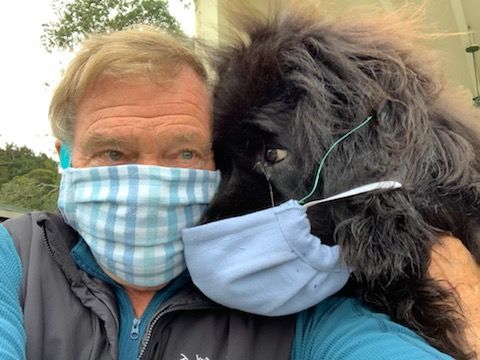
Apr 29, 2020 15:09:11 #
rb61 wrote:
Everyone seems to agree that a cameras meter will overexpose a dark object as it tries to reach middle gray.
Why would someone increase exposure (+1-+2) to make it look lighter. +1 or +2 is for underexposed light objects.
If you spot meter a white object and a black object, both will be approximately the same tone of gray.
Why would someone increase exposure (+1-+2) to make it look lighter. +1 or +2 is for underexposed light objects.
If you spot meter a white object and a black object, both will be approximately the same tone of gray.
If the camera is averaging the entire scene, the dark part will be underexposed. This is what happens in snow or on the beach. If, on the other hand, the dark subject is the majority of the scene or if spot metering the dark area, then the dark part will be overexposed, but that may be what is needed for a very dark subject.
In the second case, I would try to shoot without exposure compensation. If too light, only then go -1 or -2.
Apr 29, 2020 15:19:21 #
IDguy
Loc: Idaho
PHRubin wrote:
Right idea, wrong direction. Set to +1 or 2. Works in all BUT A Mode.
WRONG!
Like with snow, it is counter intuitive because you are correcting what the light meter is doing.
Another choice is to spot meter.
Apr 29, 2020 15:21:42 #
IDguy
Loc: Idaho
markstjohn wrote:
A mask helps brighten things up.....
Saw an article this morning that some dogs have tested positive for corona virus.
A circus would ensue if I tried to put a mask on my GSD, though.
Apr 29, 2020 15:25:24 #
IDguy wrote:
WRONG!
Like with snow, it is counter intuitive because you are correcting what the light meter is doing.
Another choice is to spot meter.
Like with snow, it is counter intuitive because you are correcting what the light meter is doing.
Another choice is to spot meter.
Did you read my post just above?
Apr 29, 2020 15:35:45 #
fetzler
Loc: North West PA
Aside from using gray cards, incident light meters and the like. It is all about lighting. Study the use of hair lights used by portrait photographers.
Apr 29, 2020 16:29:32 #
I have the same issue when photographing people with very dark (black) hair. It's hard to show detail. If you have the NIK collection (from Google or DxO), there is something in the Vivesa 2 module called "Structure." I have found that combining this with adjustments in shaddow brightness, overall brightness, and contrast helps a lot in bringing out details in dark hair.
If you want to reply, then register here. Registration is free and your account is created instantly, so you can post right away.

